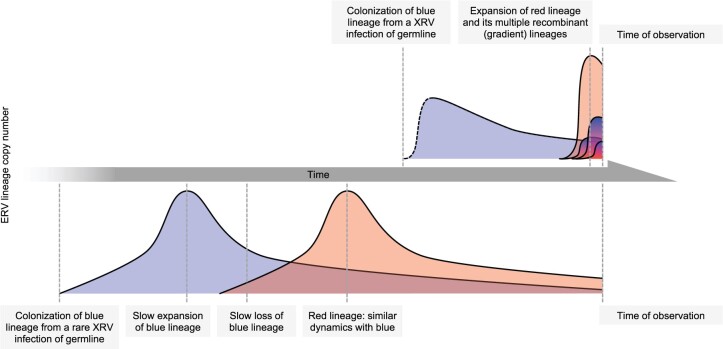Fig. 5.
CrERV colonization dynamics. The schematic depicts the dynamics among CrERVs over the period of endogenization of the retrovirus. The prevailing view of ERV endogenization is displayed on the bottom. A rare germline infection occurs in an ancestral species, expands by retrotransposition or reinfection, and declines due to loss from the population, conversion to solo LTR, or accumulation of deletions. Few intact ERVs survive to contemporary species. In mule deer, we have a close-up view of the dynamics surrounding colonization by this gammaretrovirus in a contemporary species. For simplicity, interactions between only two lineages are displayed, with Lineage A represented by red. Our data demonstrate continual colonization by CrXRVs over the last 150,000 years causing a rapid increase in CrERV burden in mule deer genomes. Activation of and recombination with existing CrERV increase both the number of CrERV loci and CrERV genomic diversity. The initial infection dynamics for the first (blue) colonizing CrERV are indicated in dotted lines because there are no data to support a rapid rise, as seen with CrERV Lineage A, but it is possible that this rapid expansion could have occurred at each new colonization event.

